Family: Xyelidae
Family common name: xyelid sawflies
Subfamily: Macroxyelinae
Tribe: Macroxyelini
Genus: Macroxyela W.F. Kirby, 1882
Subgenera: none
Most phylogenies position Xyelidae as the most primitive family of all Hymenoptera. The xyelids are usually associated with a primitive plant group, coniferousconiferous:
describing a conifer
trees (Ross 1932, Blank and Kramp 2017Blank and Kramp 2017:
Blank SM and Kramp K. 2017. Xyela davidsmithi (Hymenoptera, Xyelidae), a new pine catkin sawfly with an unusual host association from the Sierra Nevada. Proceedings of the Entomological Society of Washington 119 (Special Issue): 703-717.). The subfamily Macroxyelinae, however, is associated with angiosperms, and is likely the most primitive group of extantextant:
in existence; opposite of extinct
sawflies in the world (Smith and Schiff 1998Smith and Schiff 1998:
Smith DR and Schiff NM. 1998. The genera Macroxyela Kirby and Megaxyela Ashmead (Hymenoptera: Xyelidae) in North America. Proceedings of the Entomological Society of Washington 100 (4): 636-657.).
Macroxyela adults are large, 8–15 mm in length, with distinctively long legs and orange/red coloration. Despite these easily noticeable characters, they are rarely observed (Smith and Schiff 1998Smith and Schiff 1998:
Smith DR and Schiff NM. 1998. The genera Macroxyela Kirby and Megaxyela Ashmead (Hymenoptera: Xyelidae) in North America. Proceedings of the Entomological Society of Washington 100 (4): 636-657.).
There are only two described extantextant:
in existence; opposite of extinct
species worldwide, both restricted to North America (Taeger et al. 2010Taeger et al. 2010:
Taeger A, Blank SM, and Liston AD. 2010. World Catalog of Symphyta (Hymenoptera). Zootaxa 2580: 1-1064.).
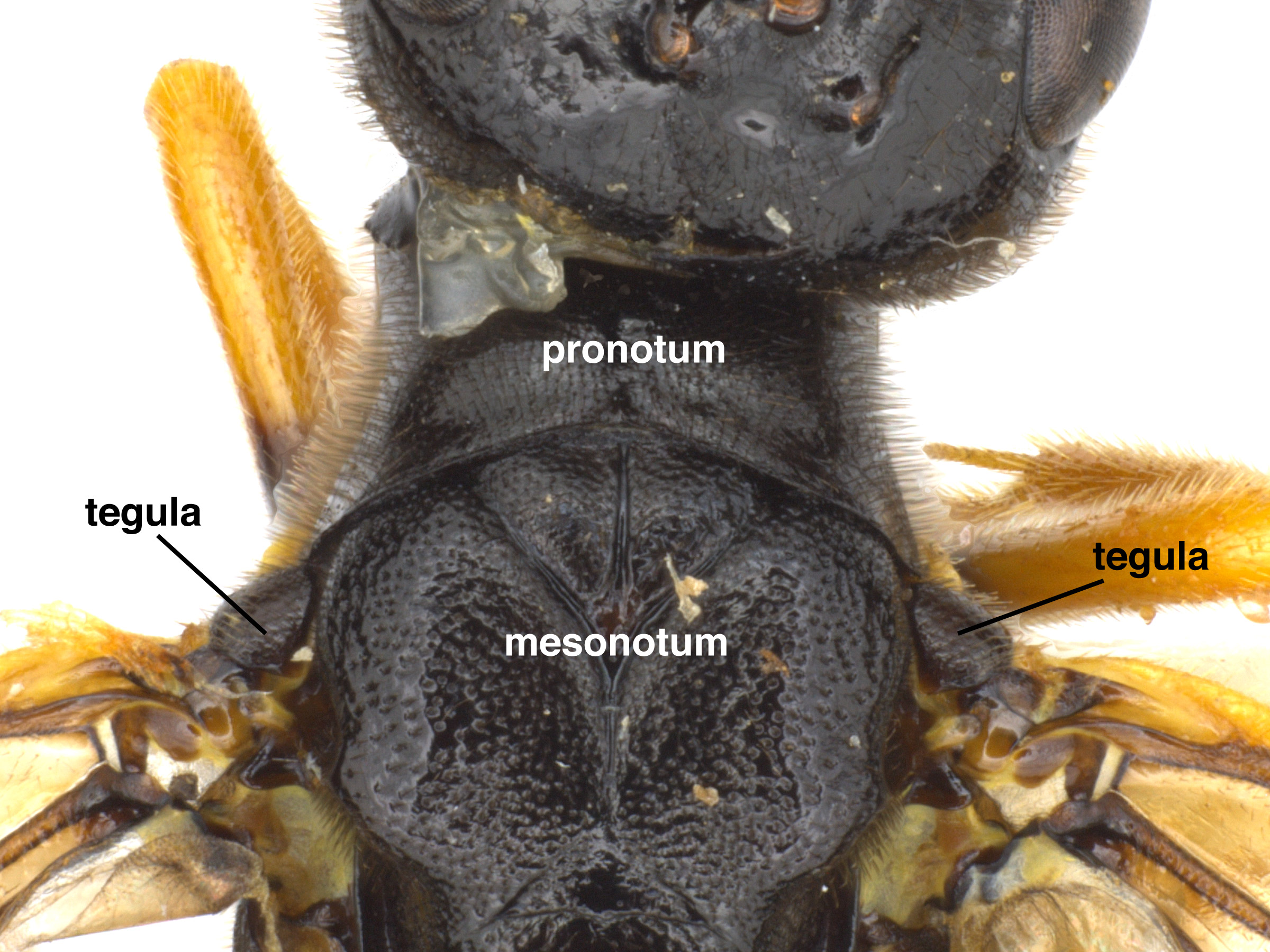 slightly constricted in the center, as seen from above (Goulet 1992Goulet 1992:
slightly constricted in the center, as seen from above (Goulet 1992Goulet 1992: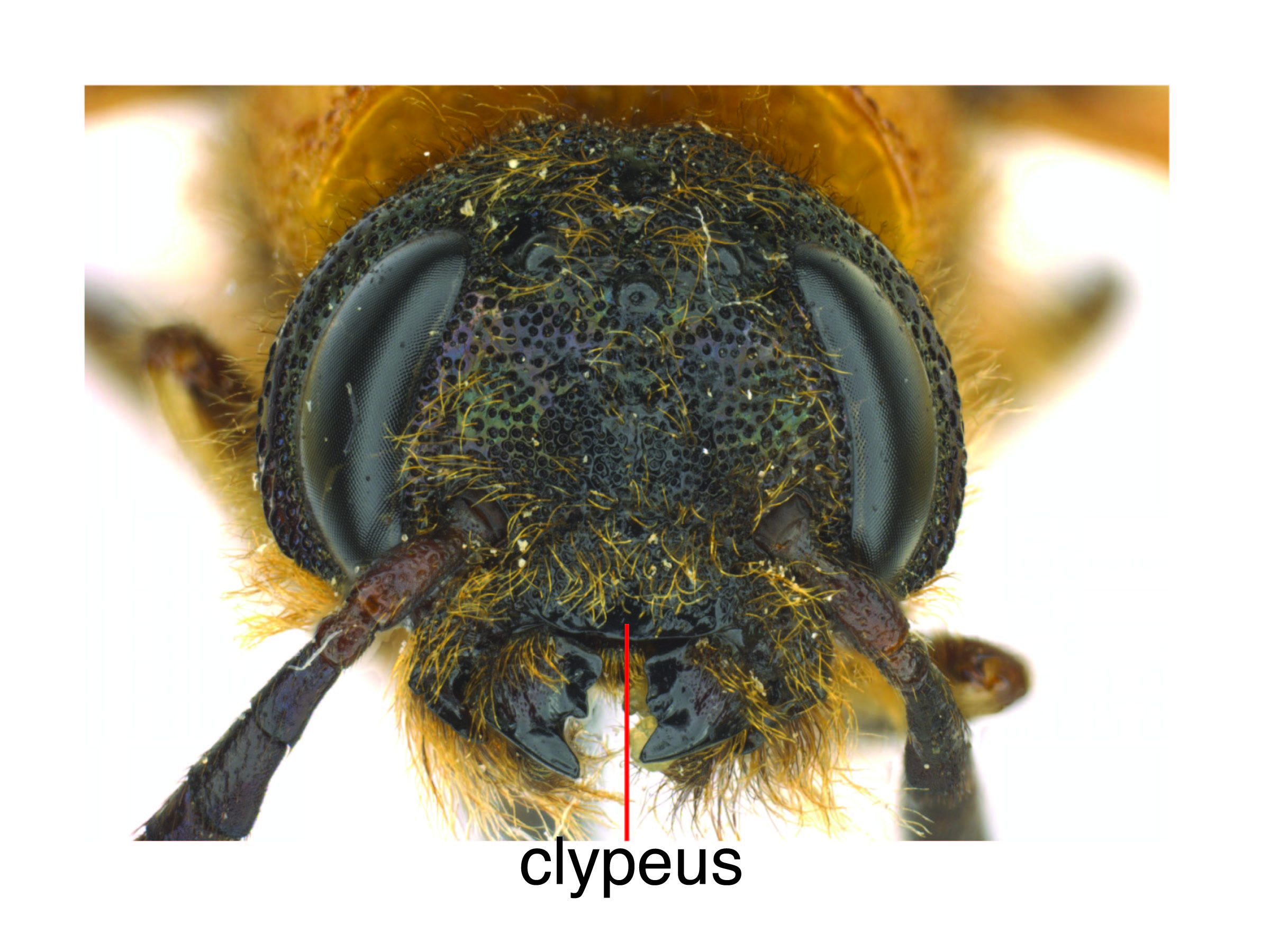 as measured at the basebase:
as measured at the basebase: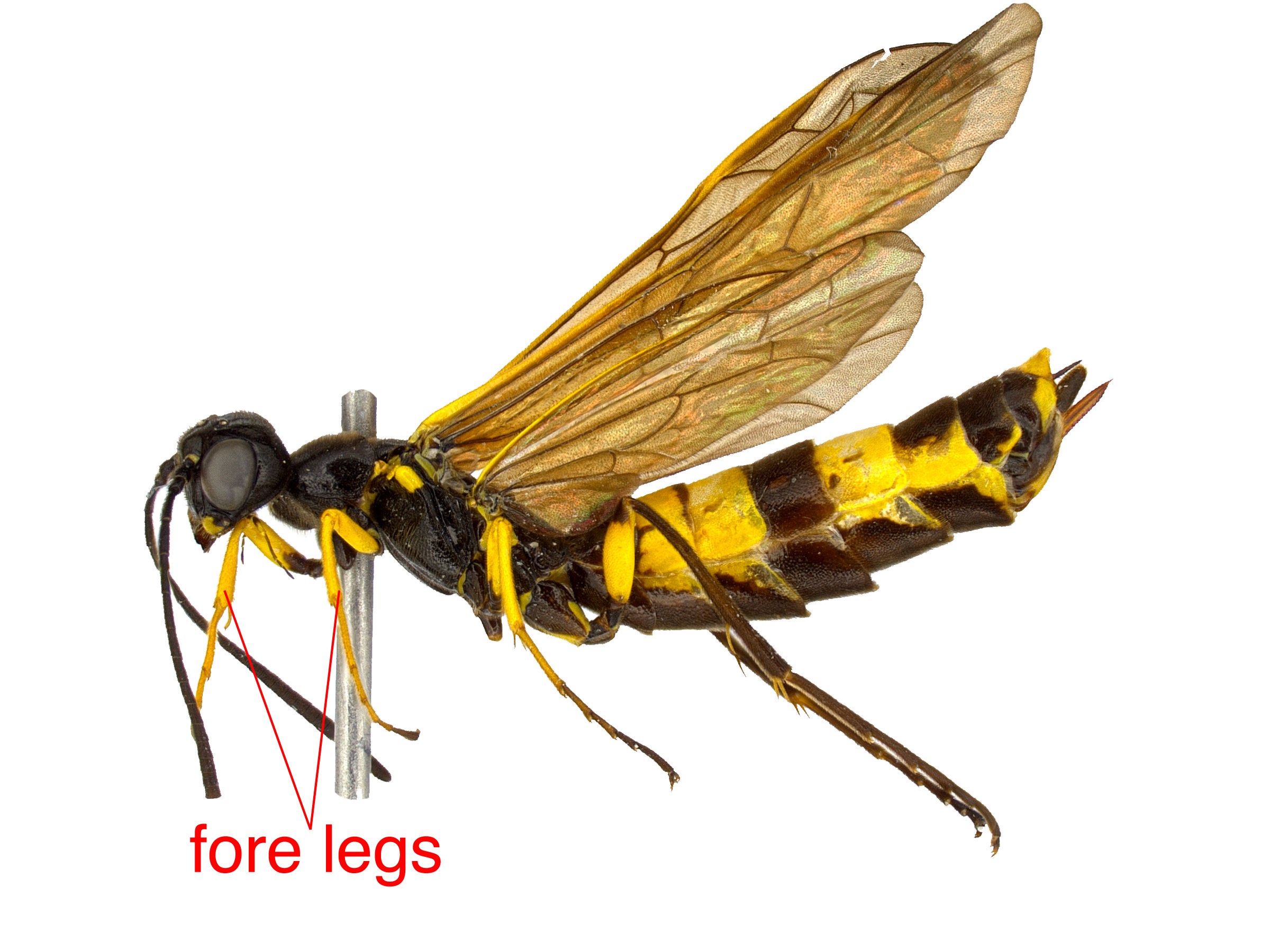 (Goulet 1992Goulet 1992:
(Goulet 1992Goulet 1992: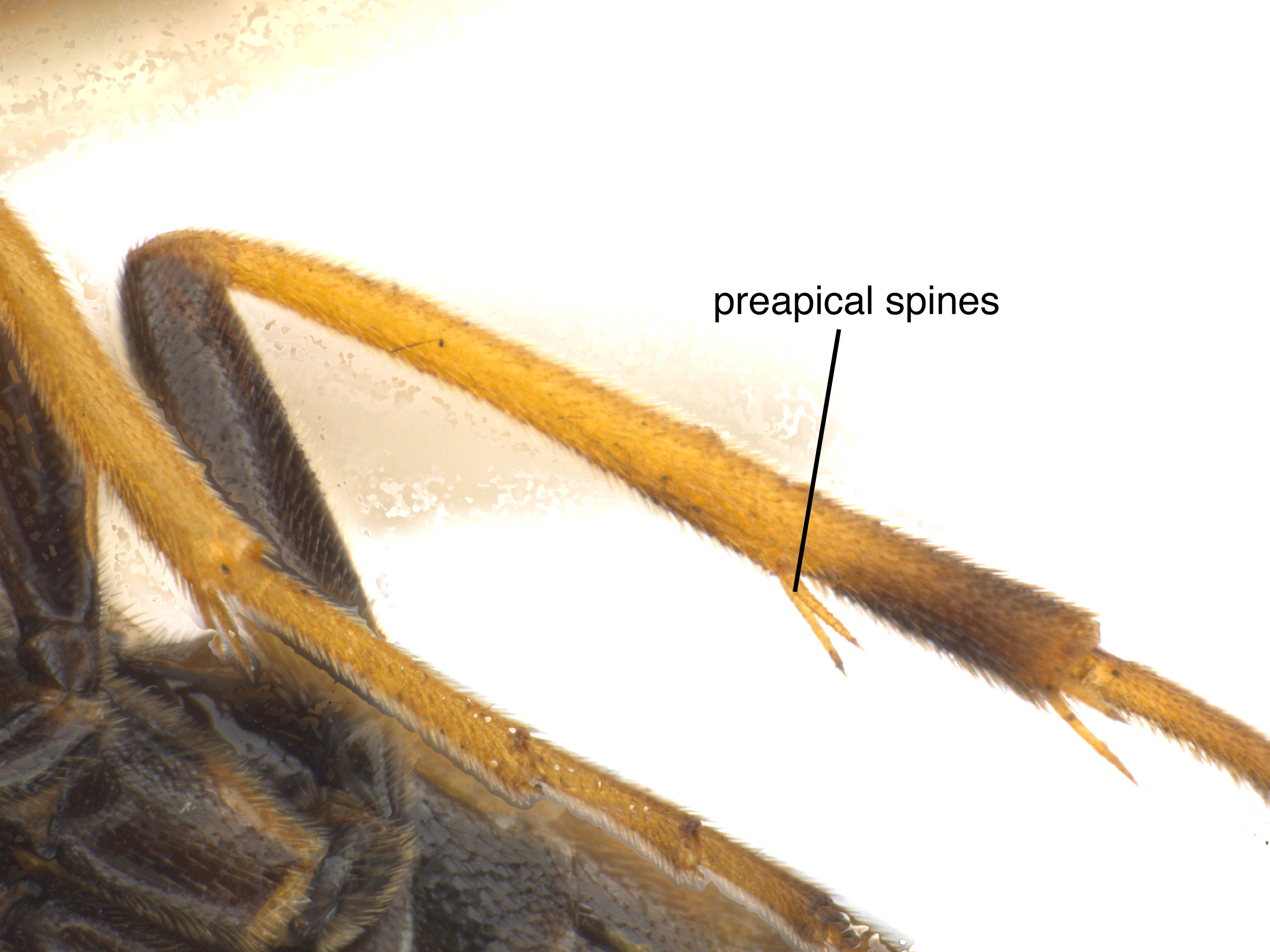 tibial spurs on the mid legmid leg:
tibial spurs on the mid legmid leg: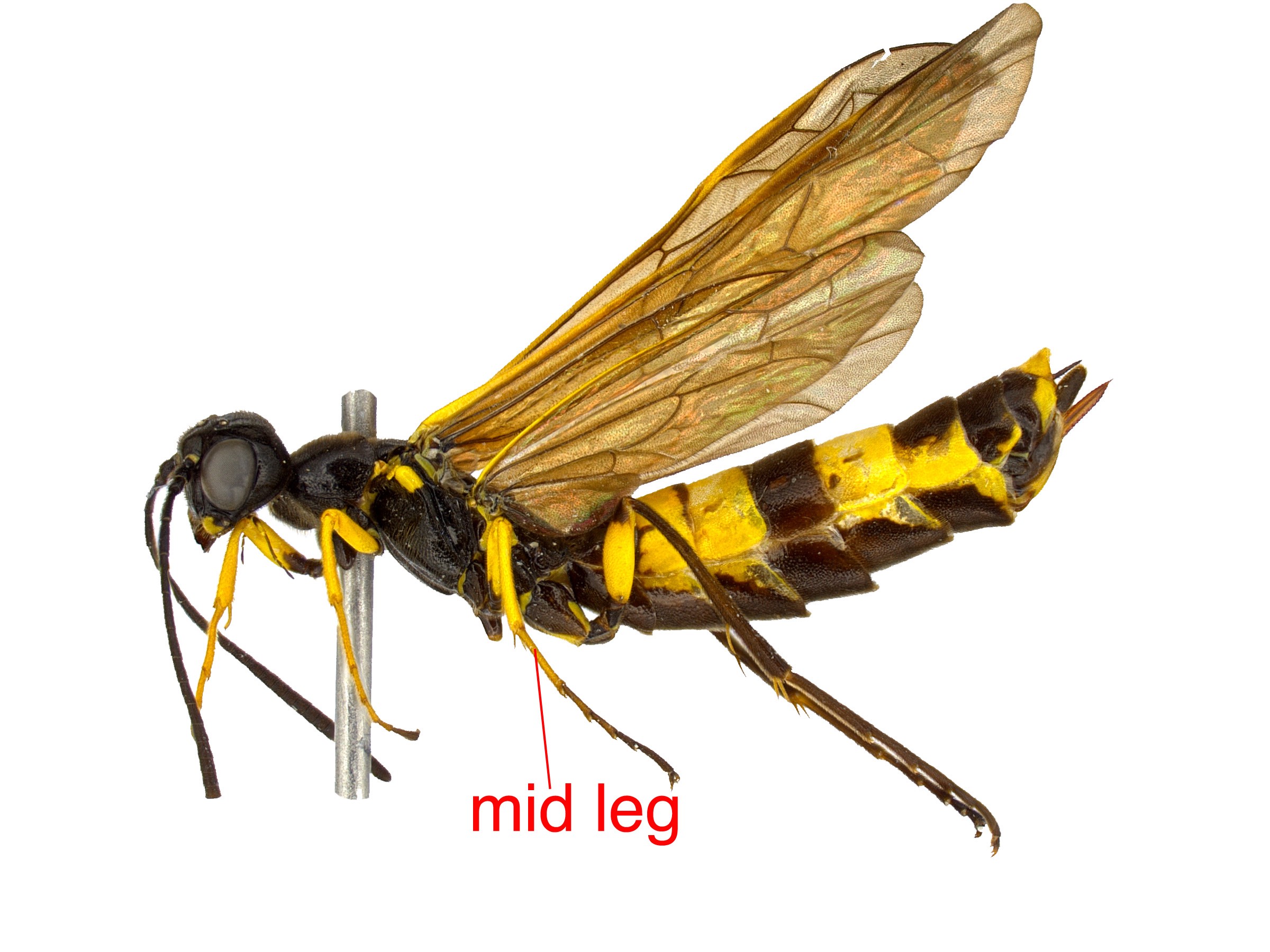 (Goulet 1992Goulet 1992:
(Goulet 1992Goulet 1992: with 8–9 segments: scapescape:
with 8–9 segments: scapescape: , pedicelpedicel:
, pedicelpedicel: , and 6–7 flagellomeres (Smith and Schiff 1998Smith and Schiff 1998:
, and 6–7 flagellomeres (Smith and Schiff 1998Smith and Schiff 1998: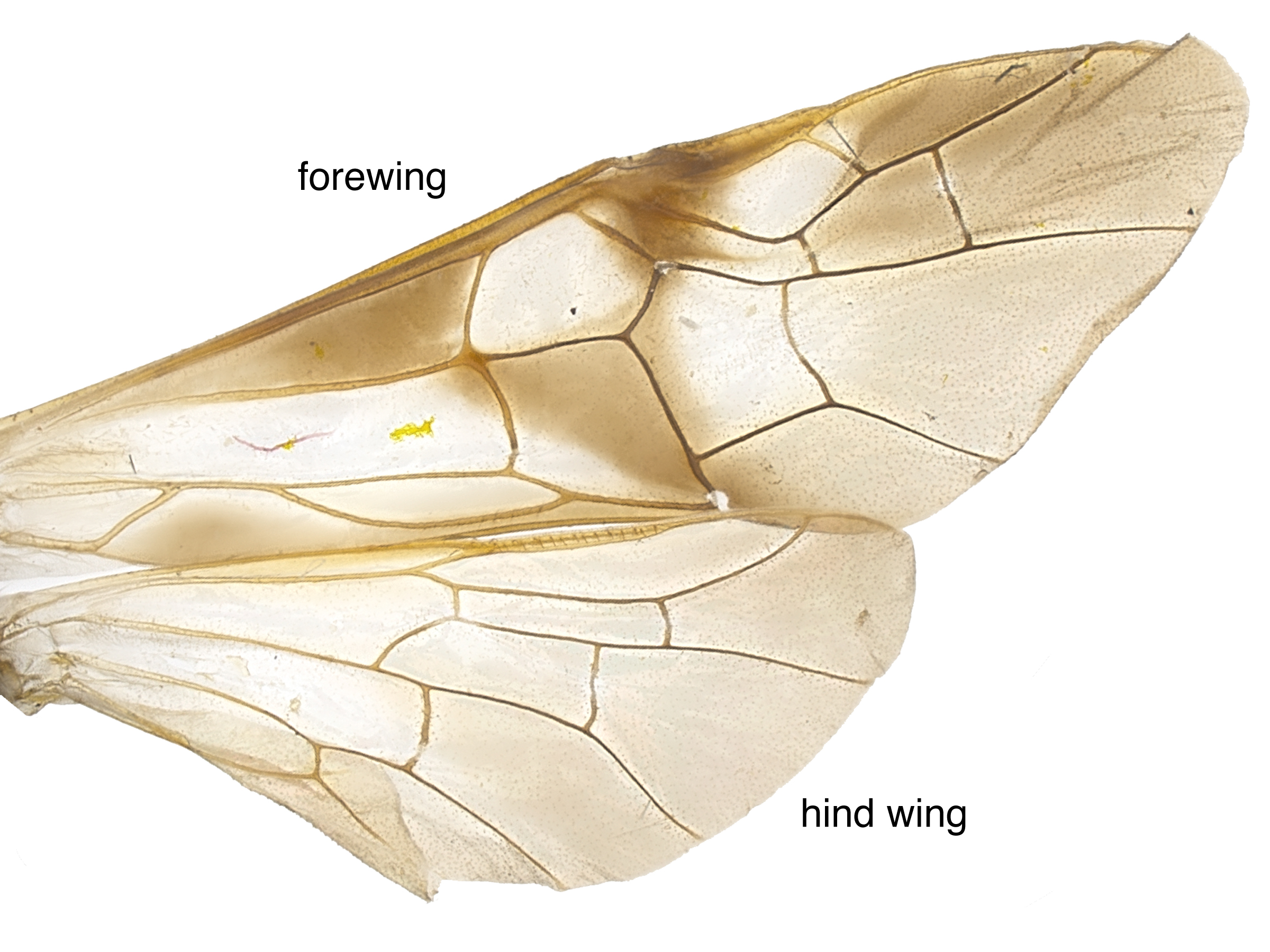 located beyond the junction of veins R and Rs (Goulet 1992Goulet 1992:
located beyond the junction of veins R and Rs (Goulet 1992Goulet 1992: with slight notch medially (Goulet 1992Goulet 1992:
with slight notch medially (Goulet 1992Goulet 1992: deeply notched (Ross 1932)
deeply notched (Ross 1932)Xyelidae can be distinguished from other families by the long ovipositorovipositor:
the female organ that deposits eggs and is used to drill into plant tissue, located at the apex of the abdomen, made up of the lance and lancet
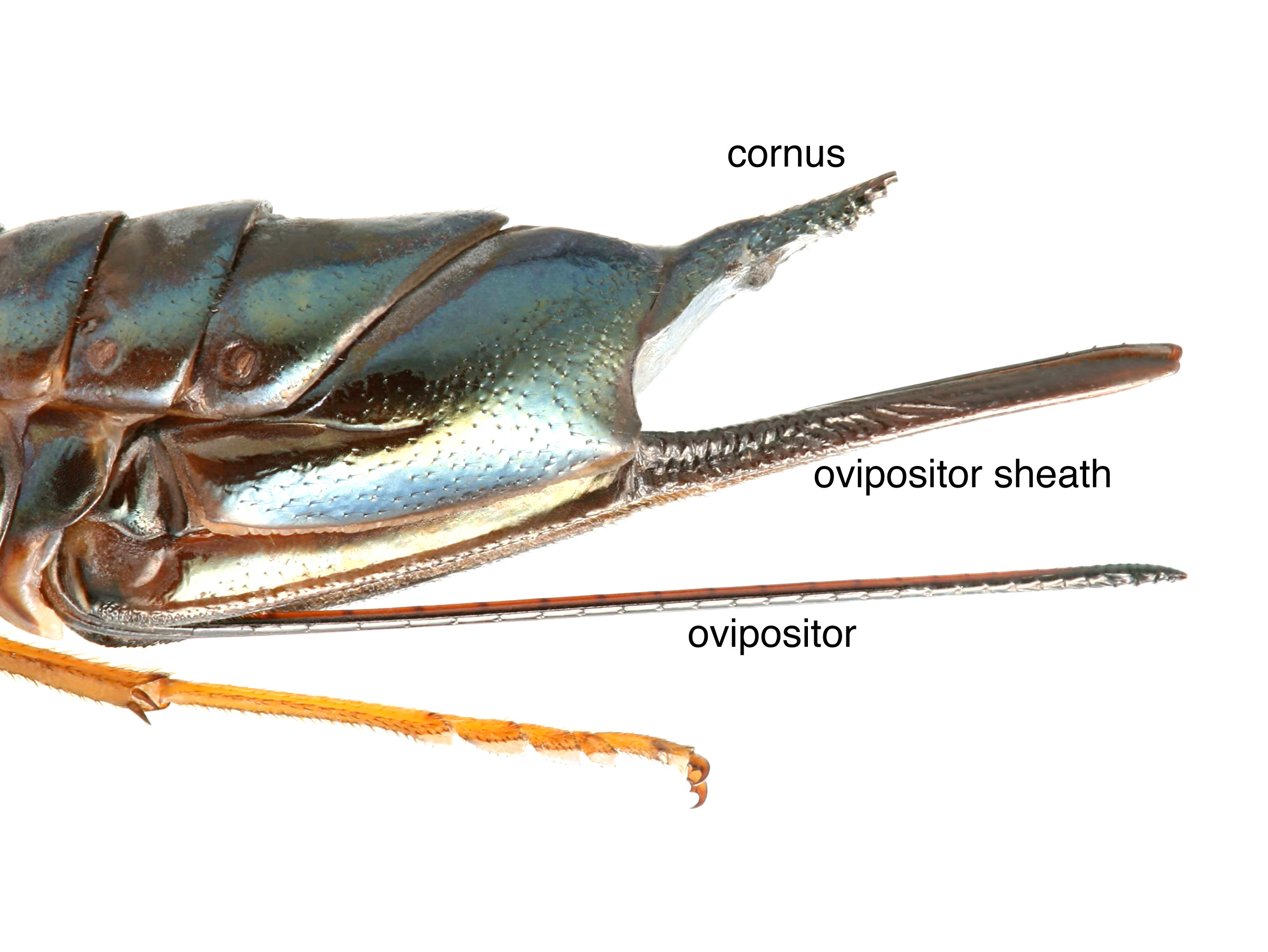 and the characteristic elongate third antennal segment which is wider than the remaining flagellumflagellum:
and the characteristic elongate third antennal segment which is wider than the remaining flagellumflagellum:
the third section of the antennae that includes all the segments beyond the pedicel; segments of the flagellum are known as flagellomeres
 . Macroxyela can be distinguished from Xyela and Pleroneura by their large size and from Xyelecia by the location of the Sc2/R veinvein:
. Macroxyela can be distinguished from Xyela and Pleroneura by their large size and from Xyelecia by the location of the Sc2/R veinvein:
a tube-like, often darkened, structure on the wings
 junction. It can be distinguished from Megaxyela by the shape of the clypeusclypeus:
junction. It can be distinguished from Megaxyela by the shape of the clypeusclypeus:
sclerotized area on the front of the head located between the antennal insertions and labrum
 (Goulet 1992Goulet 1992:
(Goulet 1992Goulet 1992:
Goulet H. 1992. The genera and subgenera of the sawflies of Canada and Alaska: Hymenoptera. Symphyta. The insects and arachnids of Canada. Part 20. Agriculture Canada Publication.).
none
Larvae are external leaf feeders recorded on Ulmus americana (American elm), Ulmus procera (field elm), and possibly also Ulmus rubra (slippery elm) (Smith and Schiff 1998Smith and Schiff 1998:
Smith DR and Schiff NM. 1998. The genera Macroxyela Kirby and Megaxyela Ashmead (Hymenoptera: Xyelidae) in North America. Proceedings of the Entomological Society of Washington 100 (4): 636-657., ITIS 2019ITIS 2019:
Integrated Taxonomic Information System. Accessed January 2019. https://www.itis.gov).
Life history information is only known for M. ferruginea. LarvaeLarva:
the immature stage of holometabolous insects
 are large, 14–18 mm in length at maturity, cylindrical, and green with brown head capsule and spiracles, as well as long, 6-segmented antennaeantenna:
are large, 14–18 mm in length at maturity, cylindrical, and green with brown head capsule and spiracles, as well as long, 6-segmented antennaeantenna:
the sensory organ emerging from the front of the head, usually between the compound eyes and above the clypeus; includes the flagellum, scape and pedicel
 . Typically, the larvaelarva:
. Typically, the larvaelarva:
the immature stage of holometabolous insects
 are situated wrapped around the basebase:
are situated wrapped around the basebase:
the beginning or most proximal area of any structure
of a leaf. As the larvaelarva:
the immature stage of holometabolous insects
 mature, they feed on the young leaves of the tree. Around June, larvaelarva:
mature, they feed on the young leaves of the tree. Around June, larvaelarva:
the immature stage of holometabolous insects
 will fall to the ground and build a loosely-compacted cocoon of sand and silk to pupate (Smith 1967bSmith 1967b:
will fall to the ground and build a loosely-compacted cocoon of sand and silk to pupate (Smith 1967bSmith 1967b:
Smith DR. 1967b. A review of the larvae of Xyelidae, with notes on the family classification (Hymenoptera). Annals of the Entomological Society of America 60 (2): 376-384.).
Adults fly during late March to early April only on warm, sunny days. Males emerge during the first few weeks and females during the last few weeks of the flight period. Macroxyela are univoltineunivoltine:
describing an insect with a life cycle of one generation per year
(Smith and Schiff 1998Smith and Schiff 1998:
Smith DR and Schiff NM. 1998. The genera Macroxyela Kirby and Megaxyela Ashmead (Hymenoptera: Xyelidae) in North America. Proceedings of the Entomological Society of Washington 100 (4): 636-657.).
World: Macroxyela is a North American genus (Taeger et al. 2010Taeger et al. 2010:
Taeger A, Blank SM, and Liston AD. 2010. World Catalog of Symphyta (Hymenoptera). Zootaxa 2580: 1-1064.).
North America: The two species of Macroxyela have overlapping ranges in the Midwest and eastern regions of the United States and southern Canada, from as far south as Louisiana, as far north as Quebec, from around the Mississippi River east to the Atlantic coast. There are a few aberrant collections farther west, in Idaho and Arizona (Smith and Schiff 1998Smith and Schiff 1998:
Smith DR and Schiff NM. 1998. The genera Macroxyela Kirby and Megaxyela Ashmead (Hymenoptera: Xyelidae) in North America. Proceedings of the Entomological Society of Washington 100 (4): 636-657.).
Map data from: GBIF.org (26 June 2019) GBIF Occurrence Download Macroxyela
Details about data used for maps can be found here.